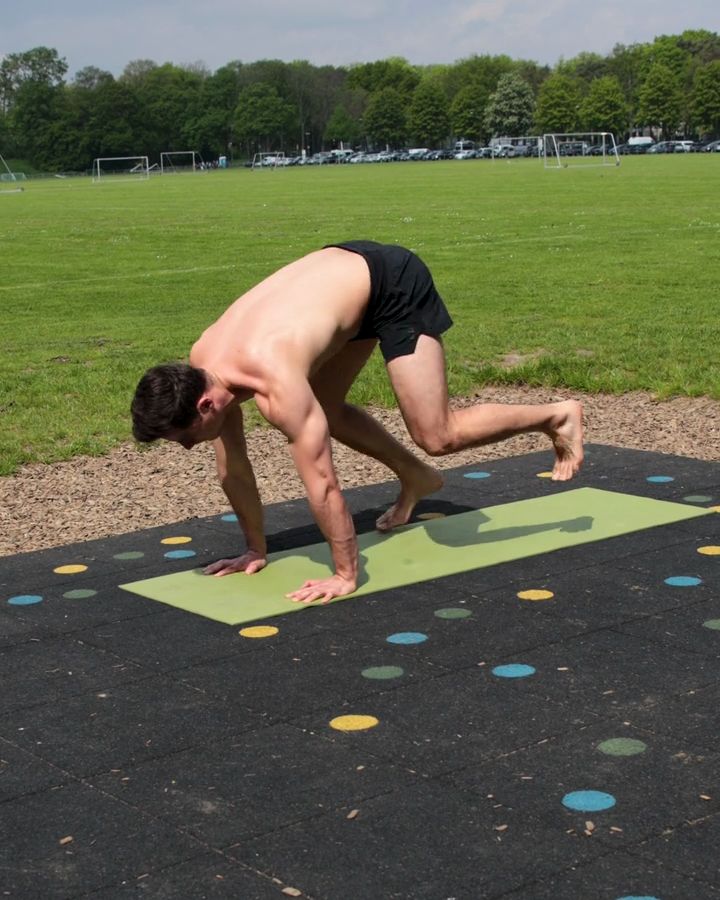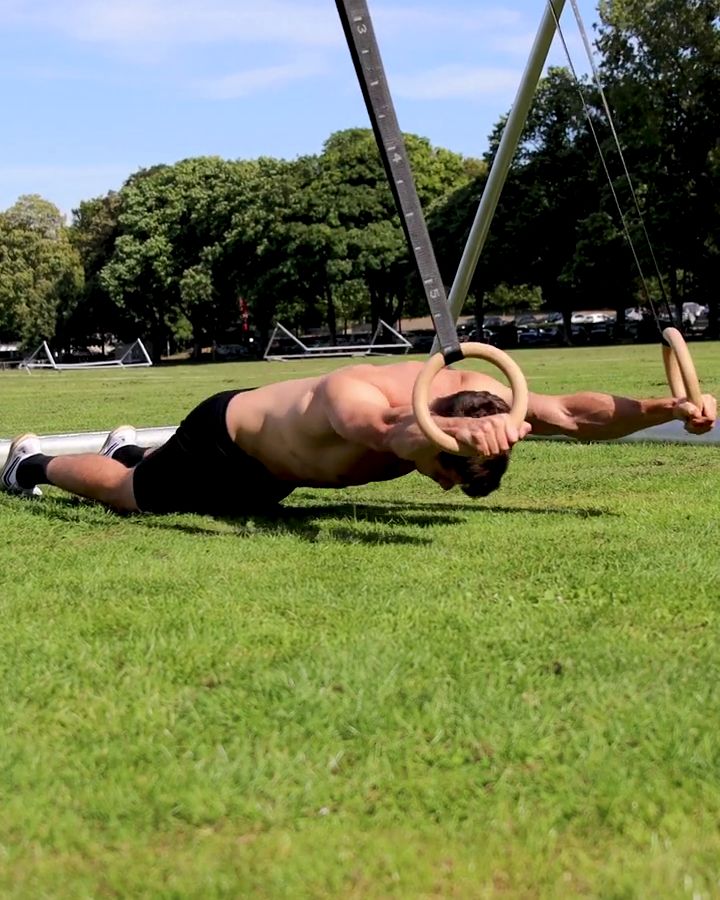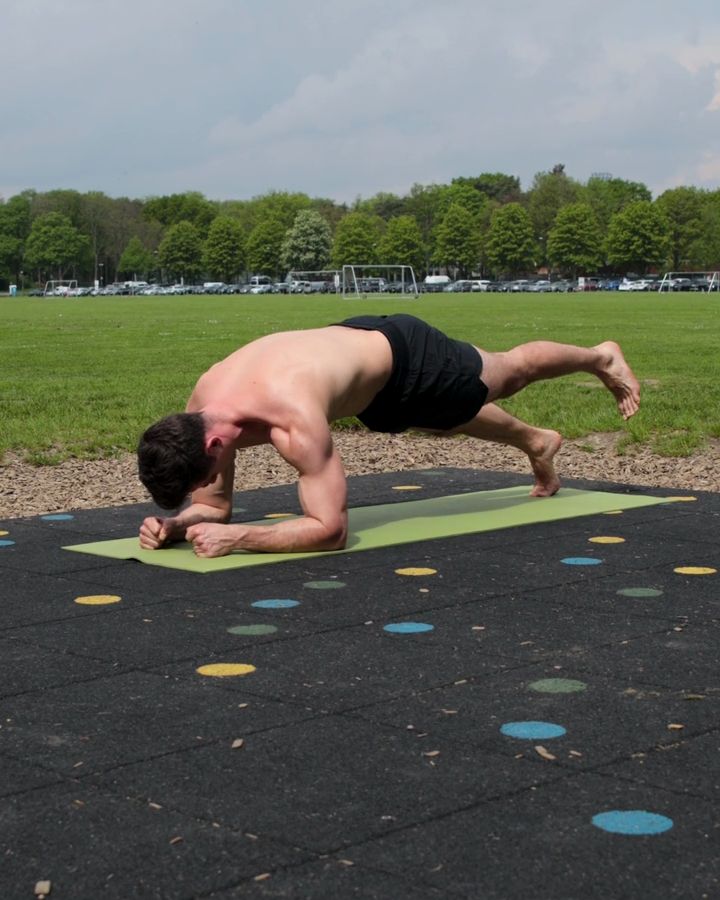Mountain Climbers
The mountain climber, also known as the running plank, is a versatile exercise that works the entire body, focusing on the arms, shoulders, quadriceps, and core. This exercise, which is especially suitable for beginners, is performed from the high plank or static push-up position by alternately bringing one knee to the chest and back, mimicking a running motion against the ground. Despite its apparent simplicity, the mountain climber engages the whole body and increases heart rate, making it an excellent addition to a morning workout, whether at home, in the gym, or even at the office.
Mountain Climbers - the correct execution
- Begin in the push-up position with straight arms, hands shoulder-width apart
- Keep your body in a straight line from your shoulders to your feet
- Dynamically pull one knee towards the same-side elbow while keeping your torso stable
- Control the leg back to the starting position
- Then switch to the other side
- Maintain constant tension in your core and glutes throughout the exercise to stabilize the spine and keep a straight body posture
- Ensure that your hips stay stable and do not swing upwards or downwards
- Repeat the movement at a steady pace, without losing form
The exercise Mountain Climbers is intended to be used as a hypertrophy exercise.
Which muscles are trained by Mountain Climbers?








Primary trained muscles for Mountain Climbers
Abs - The rectus abdominis, also known as the "abs," runs vertically along the front of the abdomen. It is responsible for bending the torso forward, such as during sit-ups, and lifting the pelvis. This muscle stabilizes the torso, supports the spine, and helps maintain good posture.
Secondary trained muscles for Mountain Climbers
Triceps - The triceps brachii muscle is located at the back of your upper arm. It extends your arm at the elbow and also helps move the arm backward.
Front Delts - The front part of the deltoid muscle, also known as the anterior shoulder, is located at the front of the shoulder. It is primarily involved in the forward movement of the arm, such as lifting the arm forward. It also assists in the internal rotation of the arm. This muscle is engaged in activities that involve lifting objects in front of the body or pushing forward.
Alternative variants of Mountain Climbers:
Advanced Mountain Climbers
For those seeking a greater challenge, there is an advanced variation of the mountain climber where the knees are twisted toward the elbows. This variation additionally targets the oblique abdominal muscles and intensifies the workout for the entire core.
Advanced Mountain Climbers - the correct execution
- Begin in the push-up position with straight arms, hands shoulder-width apart
- Keep your body in a straight line from your shoulders to your feet
- Dynamically pull one knee towards the opposite elbow while keeping your torso stable
- Control the leg back to the starting position
- Then switch sides, bringing the other knee to the opposite elbow
- Maintain constant tension in your core and glutes throughout the exercise to stabilize the spine and keep a straight body posture
- Ensure that your hips stay stable and do not swing upwards or downwards
- Repeat the movement at a steady pace, without losing form
Mountain Climbers with Gym Rings
Another advanced variation is the mountain climber with gymnastic rings. This version requires not only greater stability and balance but also places increased demand on the muscles in the arms, shoulders, and core, as the rings are unstable and require additional control.
Necessary equipment
Mountain Climbers with Gym Rings - the correct execution
- Start in a push-up position
- Arms are completely stretched
- Core and glutes are tensed to the maximum
- Shoulders are deep
- Lift one foot from the floor and touch the elbow with the knee
- Work slowly and controlled
- Each leg counts as one repetition
Wide-Stride Mountain Climber
Another challenging variation is the alternating mountain climber with a wide step. This variation places additional emphasis on the hip flexors and oblique abdominal muscles. It also further challenges the cardiovascular system, as the larger movements and rapid switching of leg positions increase the intensity of the exercise.
Wide-Stride Mountain Climber - the correct execution
- Start in the push-up position
- Put one leg next to the hands
- Jump off the ground with your feet
- Switch legs in the air so that the other leg is next to the hands
- Bring the back knee towards the ground before jumping off again
- Each jump counts as one repetition
Similar exercises to Mountain Climbers
Rollouts with gym rings
Rollouts on the gymnastic rings, also known as "Ring Rollouts" or "Ab Rollouts," are a challenging calisthenics exercise for strengthening the abdominal muscles and the entire core. This exercise requires a high level of body tension and, in addition to the abdominal muscles, also trains the shoulders and lower back. The instability of the rings makes the exercise particularly intense, making it ideal for advanced athletes looking to take their core strength to the next level.
Plank Leg Lifts
Plank leg lifts combine the core stability of the classic plank with a dynamic leg lift, which engages not only the abs and back muscles but also the glutes and leg muscles more intensively. By alternating leg lifts, balance is challenged, and the core is activated more deeply. Compared to the forearm plank, this variation involves the lower body more, making the exercise more challenging and versatile.
Hollow Body Hold
In the hollow body hold, you lie on your back and tense the entire body while pressing the lower back firmly into the floor. This static exercise primarily targets the abdominal muscles and is especially popular in gymnastics and calisthenics to improve core strength.
A similar exercise is the forearm plank, where the abdominal and core muscles are also strengthened through static holding work.
This could also be interesting
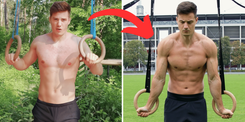
Calisthenics Body Transformation – How to Build a Strong, Lean, and Athletic Physique
Transform your body with Calisthenics! Build muscle, burn fat & achieve a shredded physique with bodyweight training. See real before & after results!

The Best Fitness Apps in 2025: Our Top 10 Recommendations
Don’t miss the best fitness apps of 2025: surprising favorites, free options, and perfect tools for your workouts. Find the ideal app today!
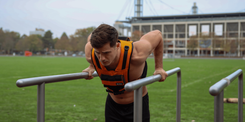
Complete Calisthenics Skills List – 40+ Exercises from Beginner to Pro
Which calisthenics skills should you learn first? And which ones will really help you progress? In this article, you’ll find a complete list of over 40 exercises – from the very basics to the toughest moves for professionals. Each exercise comes with instructions, so you can immediately integrate them into your training.
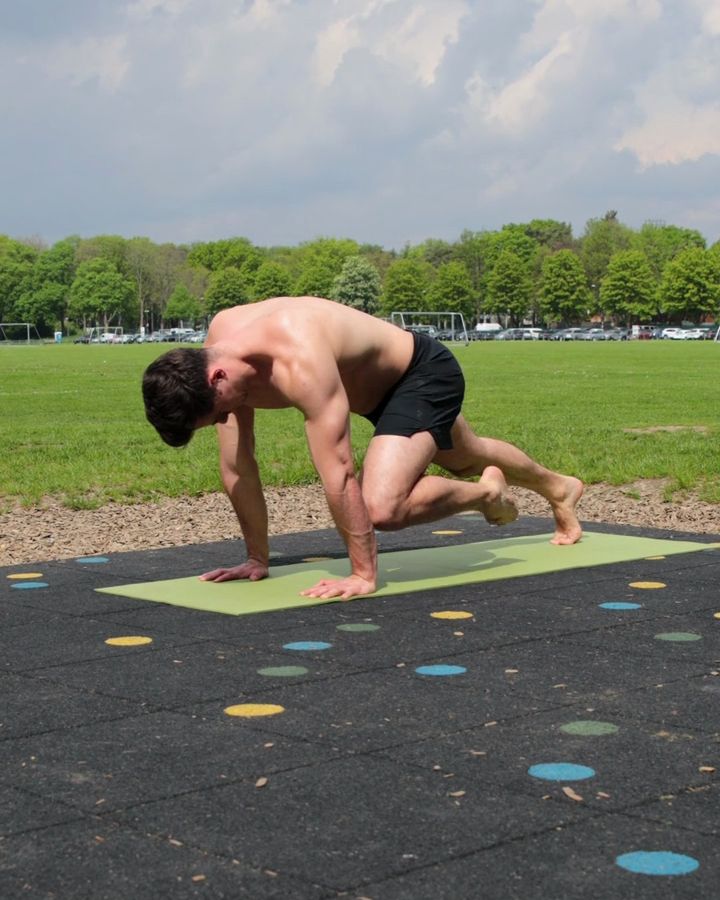
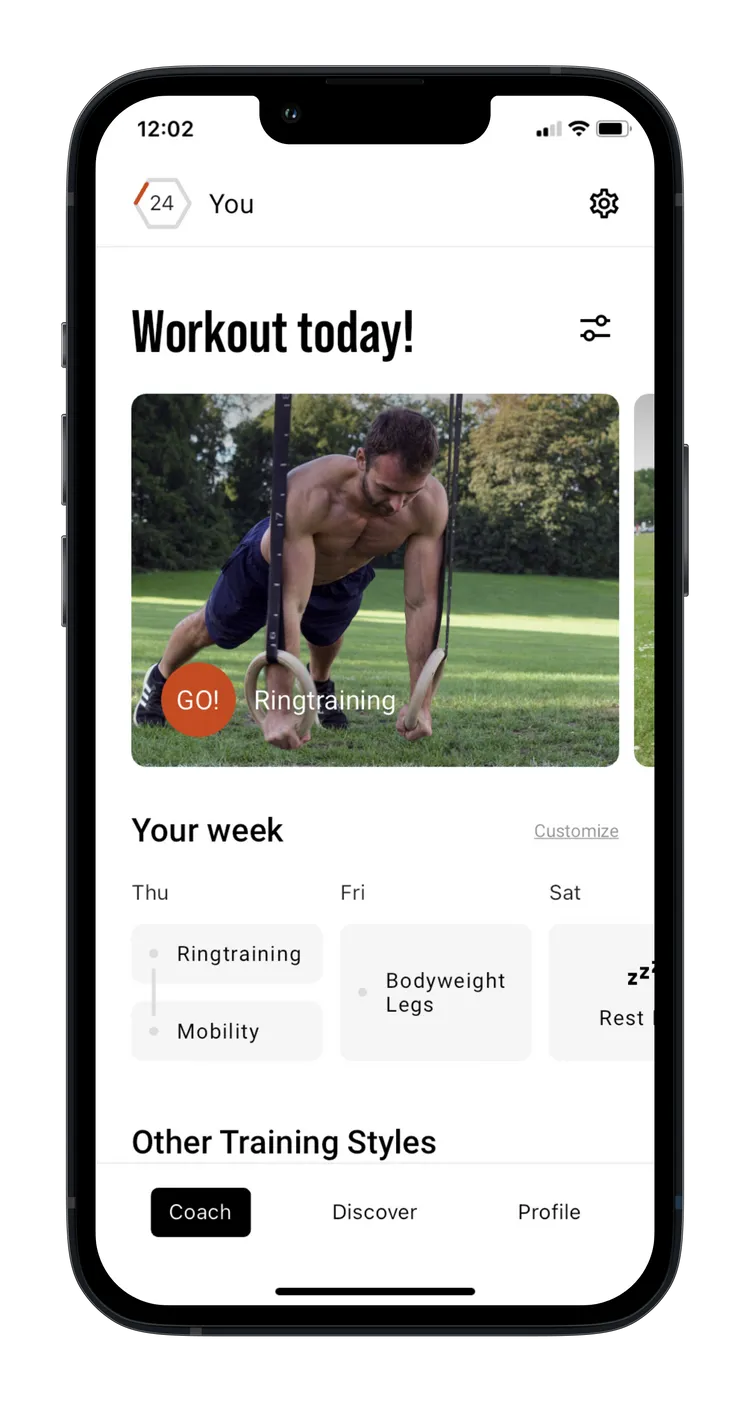



~e5724973d14549c23ea8a586b5736b36.png?alt=media)
